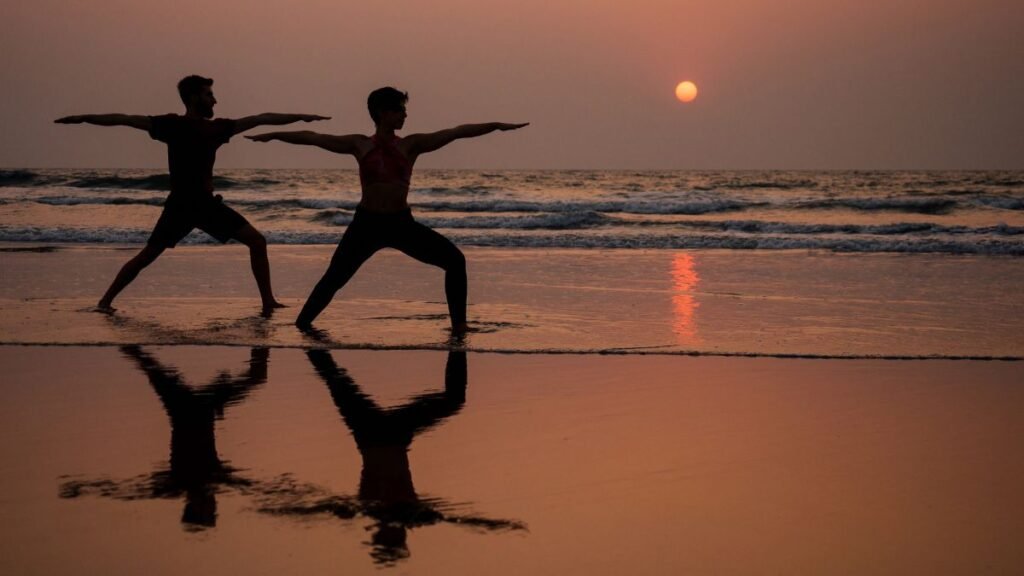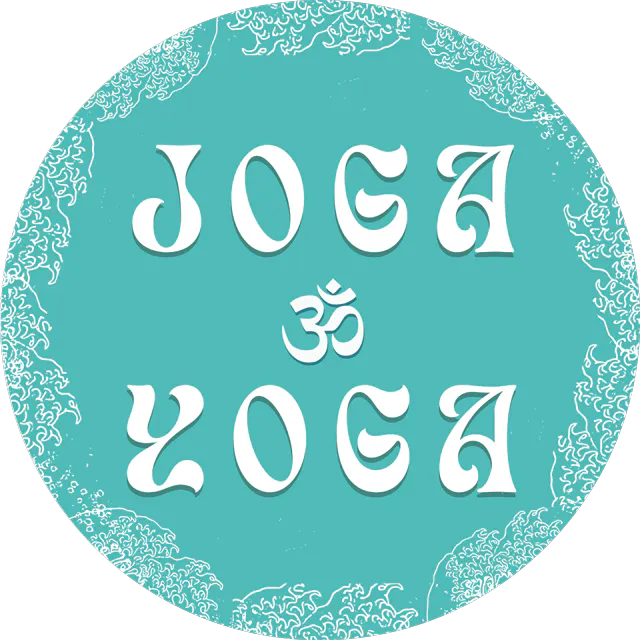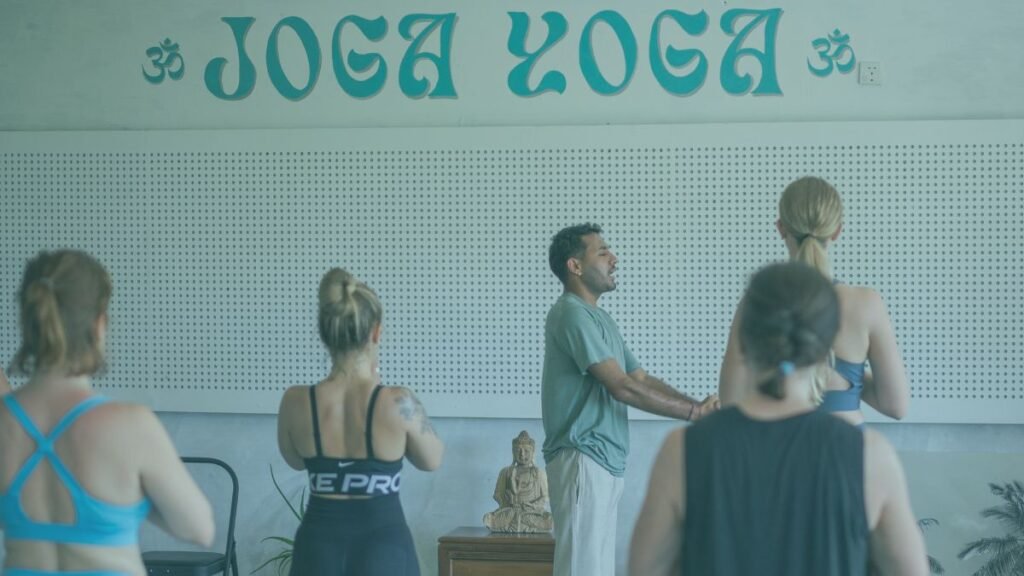Tantra is an ancient tradition focused on energy, ritual, and daily awareness. This guide explains what tantra really is, its origins, and how to practice safely.
What Is Tantra? (Literal Definition & Meaning)
Tantra is a spiritual science from India that teaches you to use your body, breath, and mind to expand consciousness and embrace all of life.
- The Sanskrit word “tantra” means “to weave” or “loom.” Tantra is about integrating every part of life, including work, relationships, and struggles, into your spiritual path.
- Tantra is not just about sex. Real tantra involves meditation, breathwork, ritual, and sometimes sacred sexuality, but its core is energy mastery and inner freedom.
- Tantra invites you to accept the world as it is, not run from it. The focus is on channeling energy (shakti), balancing masculine and feminine forces (Shiva/Shakti), and realizing that everything is already divine.
Where Did Tantra Originate? (History & Roots)
Tantra began in India over 1,500 years ago and has shaped Hinduism, Buddhism, Taoism, and many forms of yoga.
- The first tantric texts appeared around 500–700 CE.
- Tantra developed in two main streams: Hindu Tantra, which connects to Shaivism and Shaktism, and Buddhist Tantra, also called Vajrayana, which is strongest in Tibet and Nepal.
- Many popular yoga styles, like Kundalini, Hatha, and Kriya, have roots in tantric practice.
- Tantra is not dogmatic. It is practical, adaptable, and open to anyone, not just monks or ascetics.
Why Is Tantra So Misunderstood in the West? (Myths vs. Reality)
Most Western ideas about tantra focus on sex, but this is less than 10 percent of the real tradition. The true goal of tantra is transformation of everyday life.
- Neo-tantra, which started in the West in the 20th century, simplified tantra into a sex technique, ignoring its deeper teachings about liberation and self-awareness.
- In authentic tantra, sexuality is only one practice and is used mostly by advanced practitioners.
- Real tantra is about making every moment sacred with ritual, breath, and awareness, not about chasing pleasure.
What Are the Main Types of Tantra? (Traditional and Modern Branches)
There isn’t just one tantra. Different schools developed unique practices and philosophies across India, Tibet, and China.
Traditional Types of Tantra:
- Hindu Tantra: Focuses on ritual, deity worship, mantra, and energy awakening (kundalini).
- Buddhist Tantra (Vajrayana): Uses visualization, mantras, mudras, and deity yoga to reach enlightenment.
- Taoist Tantra: Developed in China, blends sexual energy, QiGong, breathwork, and body alchemy for health and spiritual growth.
Modern Types:
- Neo-Tantra: Focuses mainly on intimacy, communication, and sacred sexuality, popular in the West but not rooted in classical texts.
- Tantra Bhairawa: A powerful branch of Shaiva tantra, centered on Bhairava, using rituals and initiations for deep transformation.
| Type | Origin | Main Focus | Practices |
| Hindu Tantra | India | Ritual, energy, deity | Mantra, yantra, puja |
| Buddhist Tantra | Tibet/India | Visualization, mantra, yoga | Deity yoga, mudra |
| Taoist Tantra | China | Sexual energy, alchemy | QiGong, breath, ritual |
| Neo-Tantra | West | Intimacy, sexuality | Breath, touch, talk |
| Tantra Bhairawa | India | Bhairava worship, ritual | Mantra, meditation |
What Is Tantra Bhairawa? (Unique Path and Key Practices)

Tantra Bhairawa is a branch of Hindu Tantra centered around the deity Bhairava. It focuses on rituals, mantra, and direct experience of the divine.
- Bhairava is a fierce form of Shiva representing fearless consciousness, destruction of ego, and total freedom.
- Tantra Bhairawa uses powerful rituals, breathwork, meditation, and sometimes physical practices to break through ordinary perception.
- The tradition teaches that by facing fear, embracing life, and seeing the divine in all things, you can find liberation.
- This path is not for beginners. Guidance from a qualified teacher is critical for safety and results.
How Does Tantra Work in Daily Life? (Real-World Practice, Not Just Ritual)
Tantra teaches you to bring awareness, energy, and presence into every action—work, eating, relationships, even stress.
- In tantra, your whole life is a spiritual path. Every moment is a chance for meditation.
- Simple practices include mindful breathing, chanting mantras, visualizing energy, and setting daily intentions.
- Even daily routines like walking, cooking, or talking become meditation when you practice with attention and respect.
What Are the Core Principles and Practices of Tantra?
Tantra is built on practical tools, clear intentions, and direct experience, not vague promises or superstition.
- Energy (Shakti): Everything in tantra works with life force energy, which can be awakened, moved, and balanced.
- Mantra: Repetition of sacred sounds or phrases to focus the mind and activate energy.
- Yantra: Visual meditation on sacred geometric designs that represent different aspects of consciousness.
- Ritual: Actions with intention, often involving sound, breath, movement, and offerings to connect with the divine.
- Guru (Teacher): Most advanced practices require a teacher who can guide and protect the student, especially in mantra, deity work, or kundalini practices.
What NOT to do:
- Don’t mix advanced techniques from YouTube without guidance.
- Don’t believe tantra is just about sex or shortcuts to power.
- Real tantra is grounded in ethics, humility, and daily discipline.
How to Start Practicing Tantra Safely (Beginner’s Guide)
Anyone can start exploring tantra, but real progress comes from steady, respectful practice, never from chasing extreme experiences.
First steps for beginners:
- Focus on mindful breathing and gentle movement (asana or yoga).
- Try chanting simple mantras, like “Om” or “So Hum.”
- Practice self-inquiry and meditation to build awareness.
- Read authentic texts or take beginner classes with reputable teachers.
- Avoid groups or teachers promising instant power or using tantra as a sales gimmick.
Red flags:
- Teachers who focus only on sexuality or skip ethics.
- High-pressure “tantric massage” workshops without real credentials.
- Groups that discourage independent thought or demand secrecy.
Conclusion: Tantra is About Real Life, Not Fantasy
Tantra is a practical, spiritual path for anyone who wants more presence, energy, and connection in daily life, not just mystical experiences or sexual techniques.
Tantra teaches that everything. Work, relationships, breath, pleasure, even pain can be part of your growth. It isn’t about escaping reality, but weaving every moment into your journey.
At Joga Yoga, we respect tantra’s roots and teach only safe, ethical practices. Whether you’re curious about tantra yoga, energy, or simply want more mindful living, you can start right here, safely, and with support.
FAQ – Tantra for Real Beginners
What is tantra really about?
Tantra is a spiritual system that helps you connect body, mind, and spirit. It teaches practical ways to use breath, movement, ritual, and intention to become more aware and balanced. The goal is to realize that every part of life can be sacred.
Is tantra the same as tantric sex?
No. Tantric sex is a tiny fraction of tantra, and most traditional tantra doesn’t focus on sex at all. Tantra is about expanding consciousness, not chasing pleasure. Sexuality can be a tool, but so are meditation, breathwork, and ritual.
Can anyone practice tantra, or do you need to be religious?
Anyone can practice tantra, regardless of religion or background. It’s not about following a dogma, but about personal experience. Many beginners start with breathwork or mantra before exploring more advanced rituals.
What’s the difference between traditional tantra and neo-tantra?
Traditional tantra is rooted in ancient Indian and Tibetan teachings and focuses on spiritual liberation through energy work, mantra, and ritual. Neo-tantra, popular in the West, often highlights sexuality, intimacy, and modern self-help practices—sometimes ignoring the deeper roots and discipline of real tantra.
Do I need a guru to practice tantra?
For basic mindfulness and breathwork, you don’t need a guru. For advanced practices—like mantra initiations, deity visualizations, or kundalini awakening—you do need a qualified teacher. A good teacher helps keep you safe and grounded.
How do I find a trustworthy tantra teacher or school?
Look for teachers with clear lineages, solid reputations, and ethical standards. Real tantra teachers won’t make wild promises, pressure you for money, or focus only on sexuality. Always check credentials and read reviews.
Is tantra dangerous or risky?
Basic practices like breathwork and meditation are safe for most people. Advanced practices, especially those involving intense breathwork or energy movement, can be risky without a guide. Avoid groups that push boundaries or ignore consent.
Can tantra help with stress or emotional healing?
Yes. Many people find that tantra’s focus on breath, presence, and ritual helps reduce anxiety, build confidence, and heal emotional wounds. The effects are gradual but real—especially when practiced consistently.
Is tantra only for couples, or can singles benefit?
Singles can absolutely practice tantra. Many traditional exercises are solo—focused on self-knowledge, self-acceptance, and personal energy work. Tantra can deepen all types of relationships, starting with your own.
How do I start learning tantra at home?
Begin with basic breathwork, mindful movement, or mantra chanting. Read credible books or join introductory workshops with reputable teachers. Keep your expectations grounded—real tantra is a lifelong journey, not a quick fix.







